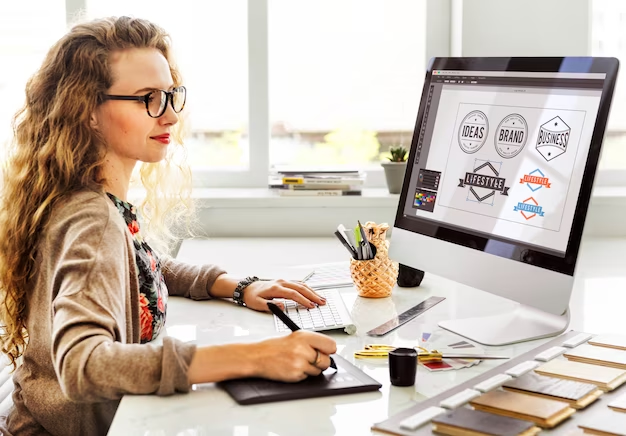You must be thinking about how design is important to content.
Well…design is not about making things look pretty. It is also about making things work well. Communicate clearly, and persuade in an effective way. In other words, design is important to content, because it helps you deliver your message to your audience in the best possible way.
In this article, we will explain how design is important to content, and how you can use design principles and tools to create stunning and successful content for your website, blog, or social media.
What is Content Design?
Content design is the process of planning, creating, and organizing content. In a way that is engaging and effective for the target audience. Content design involves not only writing text but also choosing and creating other forms of content. Such as images, videos, infographics, podcasts, and more.
Content design is based on user research, which means understanding the needs, goals, preferences, and behaviors of your audience. By doing user research, you can create content that is relevant to your audience. And that also aligns with your business objectives.
What is the Relationship Between Content and Design?

Content and design are two sides of the same coin. They work together to create a meaningful and memorable user experience. Content provides the information and the message. While design provides the visual and the emotional impact.
Content and design need to be consistent and coherent. Which means they need to match and support each other.
For example, if your content is about a serious and professional topic, your design should also be serious and professional, using appropriate colors, fonts, images, and layouts. If your content is about a fun and creative topic, your design should also be fun and creative, using bright colors, playful fonts, illustrations, and animations.
Content and design also need to be clear and concise, which means they need to be easy to read and understand. For example, if your content is long and complex, your design should help break it down into smaller and simpler chunks, using headings, subheadings, bullet points, numbers, and charts. If your content is short and simple, your design should help emphasize it and make it stand out, using contrast, alignment, whitespace, and icons.
How to Effectively Design Your Content in 5 Steps
To design your content effectively, you need to follow these five steps:
Define Your Goal and Audience
Before you start creating your content, you need to know what you want to achieve with it, and who you want to reach and influence. This will help you narrow down your topic, scope, and tone of your content, and also guide your design choices.
Research and Collect Data
After you have defined your goal and audience, you need to find reliable and relevant sources of information that support your content. You can use online tools like Bing to search for web, image, and news results related to your topic. You can also use other sources like books, journals, reports, surveys, and interviews. Make sure to verify the accuracy and credibility of your data, and cite your sources properly.
Choose a Template and Design Tool
Once you have your data ready, you need to choose a template and design tool for your content. A template is a pre-made layout that you can customize with your own content and style.
A design tool is a software or application that you can use to create and edit your content.
There are many free and premium options available online, such as Canva, Behance, and Slidesgo. These tools offer a variety of templates for different types of content, such as articles, blogs, social media posts, infographics, and more. You can also create your own template from scratch if you have the skills and time.
Customize and Optimize Your Content
The next step is to customize and optimize your content. You need to add your data and information to your template and adjust the colors, fonts, icons, images, and charts to suit your theme and style.
Ensure that your content is easy to read and understand, by using short and simple words, writing short paragraphs, avoiding consecutive sentences, using many transition words, and eliminating hard-to-read or redundant words.
You can also use headings, subheadings, bullet points, and numbers to organize your content and highlight the key points. Finally, you need to optimize your content for your intended platform and audience, by choosing the right size, format, and resolution, and adding a catchy title, a logo, and a call to action.
Share and Promote Your Content
The last step is to share and promote your content to reach your target audience and increase your visibility. There are many ways to share and promote your content, depending on your goal and platform.
For example, you can share your content on your website or blog, on social media platforms like Facebook, Twitter, Instagram, Pinterest, and LinkedIn, on online platforms and directories like Visual.ly, Infographic Journal, and Daily Infographic, or with influencers and media outlets that are interested in your topic.
You can also use tools like BuzzSumo and Hunter to find and contact influencers and media outlets in your niche. You can also create a press release or a pitch email to introduce your content and explain why it is valuable and newsworthy.
Let us help you With Your Designing Needs
Design is important to content because it helps you create a meaningful and memorable user experience. By using design principles and tools, you can create content that is engaging, effective, and persuasive for your audience and your business.
If you need help with your content design, you can contact us for our amazing web design services. We have a team of experts who can help you create stunning and successful content for your website, blog, or social media. Contact us today and get a free quote.

